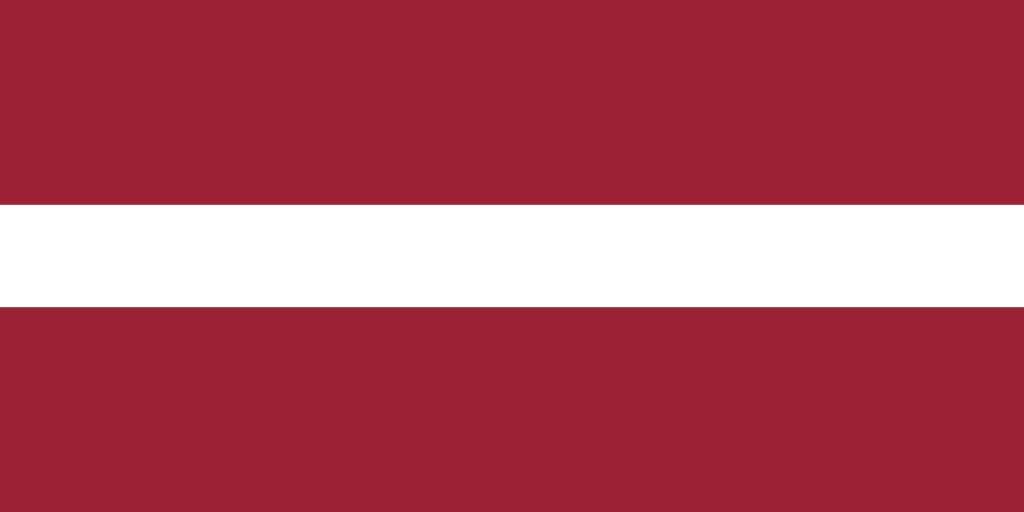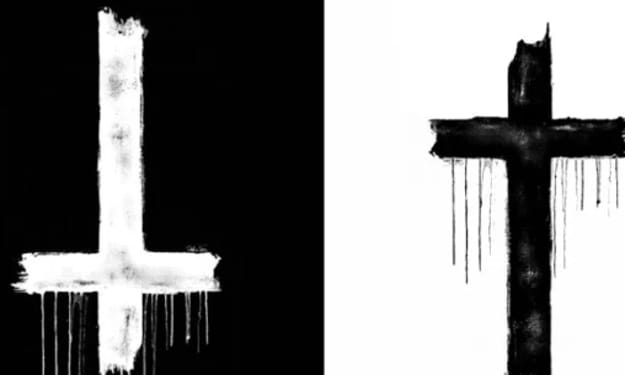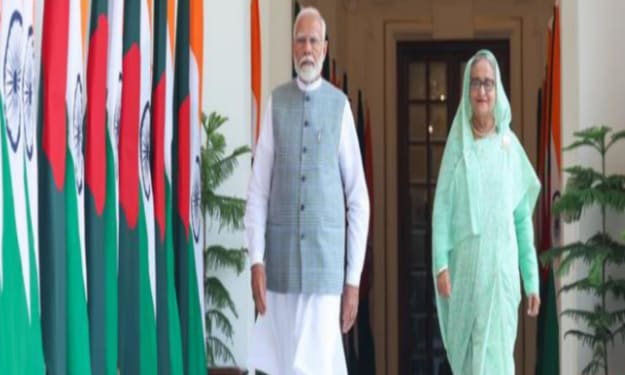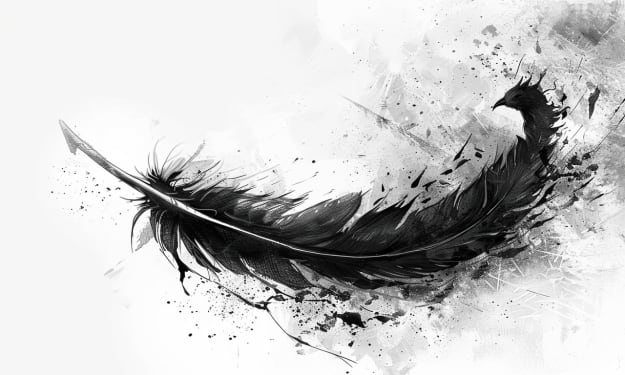
What is it about countries that make them great? Is it their culture, their history, their unique way of living, or perhaps their economy? Or could it be their climate? I've always believed that a great country is very much measured by the will of its people and its great inner strength. And for all countries, they all have moments of greatness and sometimes slip off the path of amazement from time to time. Today, we look at another great country that is unique in its own way and does have a great willpower of its own. Today, we talk about the amazing people, culture, and nation of Latvia and learn as much as we can about it.
So, let's dive right into it and look at some of the numbers. Now, first of all, Latvia, it is a European country, no duh, and it's sandwiched right between Russia, Lithuania, Estonia, and is what I sometimes refer to as the thumb and palm of the Baltic Sea and/or the Gulf of Riga. Within this country, it has a land size of 64,509 square kilometers, making it the 122nd largest country in the world. On top of that, it has a water percentage of 1.77%, which some of you may think is pretty darn low, but actually, it's pretty high compared to some other countries. That's right. And before I continue to talk more about land, let's look at some other rather unique facts.
Now, within this great nation, it has a notable population of 1,925,000 people. And this is where it gets interesting because that is just a 2008 estimate. And one thing about Latvia, compared to other countries that we've talked about in the past, Latvia is kind of a country that is decreasing in population. The indicator for this is because in 2011, its census stated that they had 2,070,371 people. So why the decrease? Well, there are a few reasons. And yes, migration is the big one, but it's also somewhat natural. This is due to a study from 2012 where they discovered that there were 20.6 births to every thousand people against 28.7 deaths for every thousand. Also, in 2013, it was recorded that 22,000 people left the country to seek other employment. As a matter of fact, it had a peak population of 2.7 million people in 1990. Because of that, it's considered one of the worst, if not the worst, population declines for any country within Europe, coming in at around 18.2%. Another big factor to this is the fact that the wage is very low in Latvia, and with borders being open because it's a country that is part of the EU and easy accessibility of knowledge of life within other EU countries, most young people pack up and leave for the grass being greener on the other side. And for some people who do live there because the wages are so low, they might not have as many kids as the previous generation would. Overall, though, with a population and land size, it has about 34.3 people per square kilometer.
Now let's move on to some more positive sides about Latvia. I mean, a decrease in population is not the only thing that's interesting about this country. For example, land, and I absolutely love this fact because over 56% of the country is considered covered in forests. And some of these forests are so old that the Latvians honor their forests. For example, they have a fossilized oak that is so old it's over 3,500 years old. And to give you an idea, that is so old Tutankhamen was in charge of the Egyptians at that time. But back to the forests. The country is actually listed as the fifth highest portion of land covered in forests in the entire European Union, coming in with an estimated 3,497,000 hectares. And because of its vast forests, at least 30,000 species of flora and fauna consider Latvia home. And of course, to touch on the honoring the forests sort of aspect here is one thing that blew me away. Within Latvia, there are 706 protected zones. And these are four national parks, one biosphere, 42 nature parks, nine areas of protected landscapes, 260 nature reserves, four strict nature reserves, 355 nature monuments, seven protected maritime areas, and of course, 24 micro-reserves. In total, for land size, it comes to around 12,790 square kilometers, which is roughly 20% of all of Latvia's land. And in 2012, the country was ranked second in the world for its environmental protection index as well. The country is home to many endangered species like the black stork, the European wolf, and the Eurasian beaver, which is very rare in other countries but flourishes well within Latvia. As much as I love all of these great nature reserves, one downside is there's a lot of illegal logging that is happening within the country, and it's actually quite a very serious issue. Most of the timber actually goes to neighboring European nations. But however, remember how I was talking about water? One thing that the country has is a lot of rivers. It's estimated that within Latvia, there's approximately 12,500 of them, at least stretching over 38,000 kilometers square. The largest of these is the Gauja River, which comes in at 452 kilometers and runs through the Latvian region. Latvia is also home to the widest waterfall in all of Europe, known as the Venta Rapids. Obviously, this changes with water level, but it's anywhere between 817 to 886 feet wide. On top of that, it's also been a national monument for the country as of 1997. Now, while we're on the topic of land, let's just mention the fact that Latvia is actually a very flat country. Yeah, that's right. But within that, the highest point within the country is the Gaiziņkalns Hill, which comes in at 1,022 feet. And even though they've made it a ski hill, it's considered the largest hill in all of the three Baltic states.
So here's one thing that I didn't know, but I'm glad I know this now, and I just love this fact because I love women. And I'll tell you this right now. Did you know that Latvia has the most amount of models per capita of any country in the world? That's right. Why? Because most Latvian women are generally tall, and you need to have height to be a model. Also, there are way more adult women in Latvia than males. Sure, there are more males born, but most males leave the country. The country even states that there is about 8% more adult females than males. It's also because there is a higher mortality rate with men due to drinking and driving. Although that's not the case for everything. Either way, there's a lot of beautiful women in Latvia, and I'm totally okay with that. I'm booking my next trip now.
One major fact that I did miss for sure is the capital. Now, for those who don't know, it's known as Riga. It's also the biggest city in the entire country, with a metro population of 1,069,871 people, which is over half the entire population of the entire country. That is insane. On top of that, it's also one-tenth of all of the Baltic States' population. Its city center is considered a UNESCO World Heritage Zone. And one major thing about Riga is its architecture, as it's firstly the top city in the world with the most amount of wood structures, coming in at around 4,000. And with that, it also has the most amount of Art Nouveau buildings in all of Europe. Whoo!
So, we're getting through quite a bit. Got a couple more. Let's talk about money. Now, obviously, within Latvia, they do use the Euro. But one thing that's really important when it comes to money is the GDP, PPP, which comes in at $60.509 billion. With that, the exports come in at $12.4 billion, making it the 78th largest exporter in the world. The biggest exports of this country are broadcasting equipment, sawn wood, which is kind of weird and is actually one of the largest exports, and even hard liquor. Mm-hmm. For imports, however, it comes in at $16.4 billion. These are cars, broadcasting equipment, refined petroleum, hard liquor, and of course, packaged medicaments.
And I think to close it all off, one of my favorite things about Latvia is its flag. Not many people know this, but it is one of the oldest flags in the world. As a matter of fact, it dates back to 1279 AD. It was mentioned in the Rhymed Chronicle of Livonia as a red flag with a white stripe through it. This actually remained pretty undiscovered until the 19th century by scholar Janis Grinbergs. And in 1870, the University of Tartu made it the ethnic flag of the Latvian students, and it just caught on since then.
About the Creator
Enjoyed the story? Support the Creator.
Subscribe for free to receive all their stories in your feed. You could also pledge your support or give them a one-off tip, letting them know you appreciate their work.





Comments
There are no comments for this story
Be the first to respond and start the conversation.